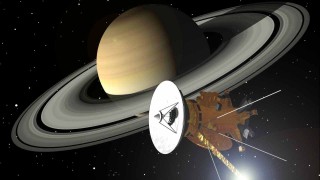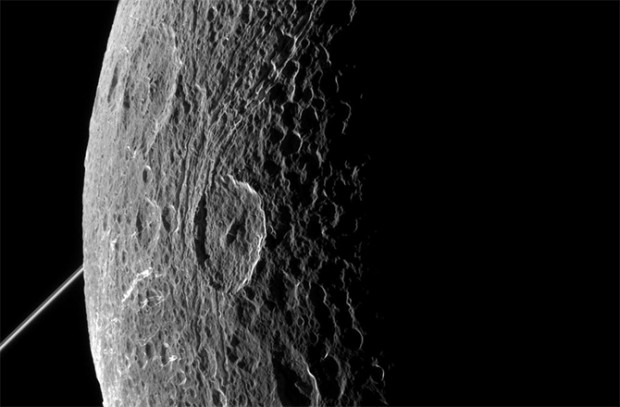
NASA’s Cassini spacecraft has homed in on one of Saturn’s many moons, Dione. After a rather close encounter, the unmanned spacecraft came to within just over 320 miles of Dione’s surface, espying its crater-riddled surface.
The flyby took place on June 16, representing the fourth occasion that Cassini has made a sweep of the icy moon. A final flyby is expected to take place on August 17, and will see the NASA-ESA-ASI craft come even closer to Dione.

During the spectacular moment, Cassini’s narrow-angle camera snapped an image of Dione, when it was situated just 48,000 miles away. The backdrop’s darkness is punctuated by Saturn’s many rings.
Once the last flyby has been performed, Cassini’s operators will swing the spacecraft away from Saturn’s ring plane. It will begin orbiting Saturn’s rings, providing scientists with an unprecedented look at the gas giant’s ring structure.
The next moon to be studied, however, is Enceladus. Cassini is set to make an astonishingly close flyby of Enceladus, flying to within 30 miles of the moon’s surface. The icy moon is thought to boast an ocean of liquid underneath its solid crust, the contents of which are being vented into space via a series of polar geysers; mission researchers hope to discover the chemical composition of this vapor.
The Cassini Mission was launched back in 1997, reaching Saturn and its many moons in 2004. Cassini was the first probe to enter Saturn’s orbit, after successfully completing flybys of Earth, Jupiter and Venus. The spacecraft was designed to study the 3D structure of Saturn’s rings, the planet’s atmospheric makeup, and the composition of its moons.
The spacecraft is expected to run out of fuel in 2017, before entering Saturn’s atmosphere.
